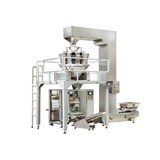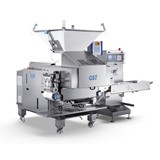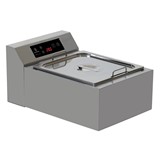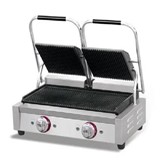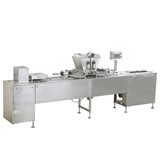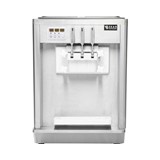Commercial coffee machines are the lifeblood of cafes, restaurants, and other establishments serving coffee aficionados. These machines work tirelessly day in and day out to produce the perfect brew, but like any mechanical equipment, they require regular maintenance to keep performing at their best. One crucial aspect of this maintenance is internal cleaning and lubrication, which not only extends the machine's lifespan but also ensures that it consistently delivers the quality coffee your customers expect.
I. The Importance of Internal Cleaning and Lubrication
1. Enhanced Performance
Regular internal cleaning and lubrication can significantly improve a commercial coffee machine's performance. Over time, coffee residues, mineral deposits, and oils from the beans can accumulate within the machine, affecting the flow of water and steam. This buildup can lead to reduced efficiency and compromised taste in the final brew.
2. Preventing Mechanical Failures
Neglecting maintenance can also lead to mechanical failures. Coffee machines have numerous moving parts, including pumps, valves, and group heads, which, without proper lubrication, can wear out prematurely. This can result in costly repairs and downtime, affecting your business's bottom line.
3. Maintaining Coffee Quality
Consistency is key when it comes to brewing coffee. Clean and well-lubricated machines are better equipped to maintain precise water temperatures and pressure, resulting in a consistent and flavorful cup of coffee. Your customers will appreciate the quality and taste of their beverages, encouraging repeat business.
A. Explaining the need for internal maintenance:
- Regular internal maintenance is crucial for the longevity and performance of your commercial coffee machine.
- Over time, coffee residue, oils, and mineral deposits can accumulate inside the machine, leading to clogs, reduced efficiency, and potential breakdowns.
- Proper internal cleaning and lubrication prevent these issues, ensuring that your coffee machine operates smoothly and consistently.
B. Detailed procedure for internal cleaning and lubrication:
Effective internal maintenance involves a systematic approach. Here's a step-by-step guide to keep your commercial coffee machine in top shape:
- Safety First: Before beginning any internal maintenance, ensure the machine is unplugged and completely cooled down to avoid accidents.
- Access the Internal Components: Refer to your machine's user manual to understand how to access the internal components safely. This may involve removing panels or accessing a designated maintenance area.
- Cleaning the Coffee Residue:
- Use a soft brush or a vacuum cleaner with a nozzle attachment to remove loose coffee grounds and debris.
- Pay special attention to areas around the grinder and coffee dispensing components, as these are prone to accumulation.
- Cleaning the Brew Group: If your machine has a removable brew group, take it out and rinse it under lukewarm running water. Ensure it's completely dry before reinserting it.
- Descaling: If mineral buildup (scale) is an issue in your area, follow the manufacturer's guidelines for descaling. Use a descaling solution suitable for your machine. This step prevents scale-related damage to internal components.
- Lubrication: Some commercial coffee machines require specific lubrication for moving parts. Refer to the user manual to identify these areas and use the recommended lubricant sparingly.
- Reassemble and Test: After cleaning and lubricating, carefully reassemble all components, ensuring they are securely in place.
- Test Run: Plug in the machine and perform a test run without coffee grounds to ensure everything is functioning correctly. Listen for any unusual noises or irregularities.
- Regular Schedule: Create a schedule for internal maintenance based on your machine's usage. For high-volume machines, more frequent maintenance may be necessary.
C. Recommended lubricants and their applications:
- The choice of lubricant depends on the specific components of your commercial coffee machine. Refer to the manufacturer's recommendations for the correct lubricants and applications.
- Common lubricants used in coffee machine maintenance include food-grade silicone grease or oil. These are safe for contact with coffee and water.
- Apply lubricants sparingly and precisely to the designated points to avoid excess residue or contamination.
II. Component Inspection: Identifying and Replacing Worn-Out Parts
In the world of commercial coffee machines, the adage "prevention is better than cure" holds true. Regular and thorough inspection of your coffee machine's components is a critical aspect of preventative maintenance. By identifying and replacing worn-out parts in a timely manner, you can significantly reduce the risk of breakdowns and ensure that your coffee machine operates at its best. In this section, we'll delve into the importance of regular inspections, provide you with a checklist for inspecting key components, and offer guidelines for the replacement of worn-out parts.
A. The Role of Regular Inspection in Preventing Breakdowns
Regular inspections are the first line of defense against unexpected downtime and costly repairs. Think of it as giving your coffee machine a routine check-up. By doing so, you can catch minor issues before they escalate into major problems, keeping your coffee service uninterrupted.
B. Checklist for Inspecting Key Components
- Group Head Gaskets: Begin by examining the group head gaskets. These rubber seals create a tight seal between the portafilter and the group head. Check for any signs of wear, cracks, or leaks. Replace gaskets that show signs of deterioration to maintain a proper seal and prevent leaks.
- Portafilters and Baskets: Inspect the portafilters and filter baskets for signs of damage or wear. Ensure that they fit securely in the group head. Damaged portafilters or baskets can lead to inconsistent extraction.
- Steam Wands and Valves: Check the steam wands for any blockages or calcium buildup. A clogged steam wand can affect steam pressure and milk frothing. Also, test the steam valves for smooth operation, ensuring they open and close without resistance.
- Water Inlet and Outlet: Examine the water inlet and outlet tubes for any visible damage or leaks. Loose or damaged connections can lead to water wastage and inconsistent water flow.
- Boiler and Heating Elements: While this may require a more in-depth inspection by a professional technician, it's essential to be aware of any signs of overheating, corrosion, or unusual noises coming from the boiler. These could be indicators of impending problems.
C. Guidelines for Replacing Worn-Out Parts
When you identify components that need replacement during your inspection, it's crucial to follow these guidelines:
- Use Genuine Replacement Parts: Always use genuine replacement parts recommended by the manufacturer. This ensures compatibility and maintains the machine's warranty.
- Turn Off and Disconnect: Before replacing any parts, turn off the machine and unplug it from the power source to ensure your safety.
- Follow Manufacturer's Instructions: Refer to the manufacturer's maintenance manual or guidelines for step-by-step instructions on replacing specific components.
- Seek Professional Help When Needed: If you're uncertain about any aspect of the replacement process or if it involves complex internal components, it's advisable to seek the assistance of a qualified technician.
In conclusion, the importance of internal cleaning and lubrication in maintaining the smooth mechanical function of commercial coffee machines cannot be overstated. Regular maintenance not only extends the longevity of these machines but also ensures consistent performance, preventing unexpected breakdowns and disruptions. The step-by-step procedure outlined in this guide, from safety precautions to cleaning and lubrication techniques, provides a comprehensive approach to keeping your coffee machine in top shape. Additionally, understanding the choice and application of lubricants is crucial for the proper care of your machine's moving parts. Furthermore, component inspection plays a pivotal role in preventing breakdowns, and the provided checklist and guidelines for part replacement serve as valuable tools in this preventive maintenance process. By following these practices diligently, you can enjoy uninterrupted coffee service and the longevity of your commercial coffee machine investment.


-160x160-state_article-rel-cat.png)
